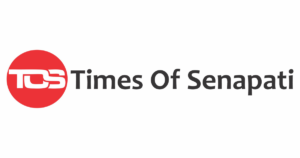NEW DELHI, March 3: According to a recent report by UNESCO’s Global Education Monitoring (GEM) team, 40% of the global population does not have access to education in a language they speak or understand. Despite increasing awareness of the importance of home language in education, policy uptake remains limited, and challenges to implementation persist. These include limited teacher capacity to use home languages, a lack of educational materials in native languages, and opposition from some communities.
In low- and middle-income countries, this figure can rise to as high as 90%, affecting more than a quarter of a billion learners globally. GEM officials are calling on nations to implement multilingual education policies to ensure that educational systems benefit all learners. The team’s report, titled “Languages Matter: Global Guidance on Multilingual Education,” highlights the importance of embracing linguistic diversity in educational settings, especially as migration continues to increase worldwide.
The report was launched on the 25th anniversary of International Mother Language Day, celebrating efforts to preserve and promote the use of mother tongues in education. It notes that over 31 million displaced youth are facing language barriers in education, a challenge further exacerbated by the COVID-19 pandemic, which has already led to a sharp decline in learning levels in subjects like reading and mathematics.
The report emphasizes that the impact of this decline has been disproportionate for students who do not speak the language of instruction at home, either due to historical reasons or migration. The gap in learning outcomes between these students and their peers has widened significantly from 2010 to 2022, with a 6% increase in the gap for reading and a 5% increase in mathematics.
UNESCO’s GEM team also pointed to the historical and contemporary factors contributing to linguistic challenges in education systems. In some countries, languages were imposed on local populations during colonial periods, preventing the use of native languages in schools and creating educational disparities. In countries with large linguistic diversity, the implementation of multilingual education programs is often limited by a lack of resources.
Additionally, immigration in wealthier countries has led to increased linguistic diversity in classrooms, creating challenges in instruction and assessment. These countries must navigate issues such as providing language acquisition support for immigrant students and ensuring equitable access to quality education.
The GEM team has called for context-specific approaches to educational language policies. These should include curriculum adjustments and the development of teaching materials suited for multilingual education. The team also recommends that countries with large immigrant populations should support the creation of effective bridging language programs, the deployment of qualified teachers, and the fostering of inclusive learning environments that meet the diverse linguistic needs of all students.
Training for teachers, particularly in multilingual contexts, is crucial, with a focus on proficiency in both home and second languages. The report also advocates for strong support systems outside schools to ensure the success of multilingual education policies and for school leaders to play an active role in promoting inclusion within schools.
Finally, the report stresses that the recruitment and training of school leaders should emphasize the importance of fostering inclusive environments, where collaboration between educators, parents, and the community can bridge gaps between linguistic groups.
The findings of this report come at a crucial time, as India moves forward with implementing its new National Education Policy (NEP), which advocates for multilingual education. However, the three-language policy has faced opposition from some states, raising further challenges in implementing multilingual education practices effectively.

